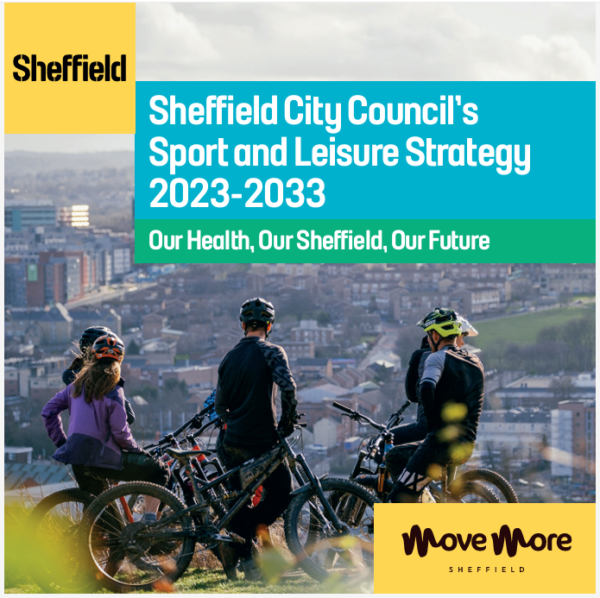The sport, leisure and active wellbeing sector loves a strategy. Typically, local authorities use them to set out their policy position, direction, priority outcomes and plans. Active Partnerships use them to highlight and articulate their purpose and work as a systems leader across their locality.
Huge amounts of time and effort is invested into developing strategies: we consult, engage, co-produce, draft, redraft and, finally, launch. But then what?
Most strategies lay dormant, hidden within websites, unread, disowned and abandoned:
- Unused by the organisation who created it
- Forgotten by the partners who were engaged in the first place
- Unknown by the system the strategy is seeking to support.
 A few are scanned by determined visitors to those websites who want to know what the organisation does. Or they are dusted down when the impact report is being written and the organisation needs to remind itself what it said it would do.
A few are scanned by determined visitors to those websites who want to know what the organisation does. Or they are dusted down when the impact report is being written and the organisation needs to remind itself what it said it would do.
The longer the strategy, the greater the risk that the organisational memory is diminished as to why it was written in the first place, leading to a disconnect with the current organisation that inherited it.
There’s another problem. Any strategy needs to be explicit about what the work actually is – but in our experience, very few state this clearly.
SLC has reviewed strategies published by local authorities, Active Partnerships and more recently, the previous government. They frequently include a vision statement, a set of values, an explanation of systemic problems and a set of priorities that should be tackled through collaborative working. This is all positive and demonstrates both understanding of the challenges and a commitment to partnership working.
But often, there is very little about what the organisation and its partners want to collectively achieve, their respective roles or how they will do it. This is further complicated by the use of strategy jargon rather than plain English: themes, principles, ways of working, long term ambitions and catalysts. The language is often confusing and the clarity is lost.
Furthermore, many do not publish their action plans and if they do, they are not costed, assigned or time-framed.
Get Active, the previous government’s strategy for sport and physical activity, is a case in point. It was big on ambition but silent on detail. The message is this: “Sport and physical activity sector, be inspired and now rise to the challenge!” But frankly, it’s not enough. System partners who are funded directly or indirectly by government want to help deliver the national strategy but don’t know where to start.
In addition, few strategies deal with monitoring and evaluation (M&E) effectively. M&E often feels like a chapter tacked on at the end of the strategy when in reality, it is one of the most important components. If we don’t monitor, we won’t know if our plans are on track. If we don’t evaluate, we won’t know if the strategy is actually delivering anything substantial or what the learning is. Without a balanced range of robust measures, there’s no accountability and no assurances to the funder that their investment has been worthwhile.
Elected members, boards, funders and government want to know, justifiably, what the organisation intends to accomplish, how it will do it and how will measure progress, learn from success and failure and adapt.
Notably, the Public Accounts Committee was very critical of DCMS and Sport England in 2023, “[they] have made little progress in tackling inequalities and barriers to people participating in sport and physical activity”. Sport England argued otherwise but the key point is that the committee weren’t convinced, which suggests that if they have made progress, they haven’t been able to demonstrate it satisfactorily.
In our view, monitoring and evaluation should be used to ‘trim the sails’ – to adjust objectives and action plans to ensure the strategy stays on track. For this to work, a Strategy Steering Group needs to be its custodian, regularly overseeing the monitoring and evaluation and empowered to make changes. Again, this very rarely happens consistently in the real world.
As a case in point the impact of COVID and cost of living crisis has for many forced a major shift in many of the key foundations, assumptions and realities for organisations. But how many organisations are still using a strategy which dates from before March 2020? In most cases they are now meaningless.
Isn’t it time many we recognise that a more effective, robust and practical approach is needed?
So, what does your strategy need to do?
 Firstly, it needs to inspire. It should be ambitious. It should be relatable so that the reader can connect with the message and understand “what’s in it for us” and “how can we play our part?”.
Firstly, it needs to inspire. It should be ambitious. It should be relatable so that the reader can connect with the message and understand “what’s in it for us” and “how can we play our part?”.
The inspiration and ambition should motivate action throughout the life of the strategy. We recommend a maximum period of five years with rolling two year action plans, reviewed annually, given the speed at which the external environment changes.
Secondly, it should be specific about what you want to achieve. This should be a combination of both outputs and outcomes. We think of outputs as the staging posts to outcomes – they demonstrate progress. You might have an outcome of improved health and wellbeing of your community in five years, but without some measurable outputs, you won’t know if you are on track. Being clear about the results you are striving for and how you intend to demonstrate you have achieved them will build confidence and momentum.
Thirdly, it needs to engage staff, boards and delivery partners in its implementation. The first step is to engage all those stakeholders in the strategy development process. However, that alone isn’t enough. Without the feeling of real ownership will they take responsibility for delivery? In our experience, this requires collaboration, communication and patience. Not all organisations operate at the same pace. Understanding this and designing this into the strategy is recommended. Assigning early implementation to those organisations that can hit the ground running is advised.
At SLC, we have used these principles to re-focus our own strategy. This has enabled us to focus on our purpose in transforming public leisure services, helping to create healthy, active, and inclusive communities.
SLC has established a formidable reputation in developing strategies on behalf of local authority clients for years including Bristol City Council, North Herts Council, Babergh and Mid Suffolk, Bury Council and Sheffield City Council.
 Sheffield City Council launched its Sport and Leisure Strategy in December 2023. SLC played a lead role working alongside Council colleagues and Sheffield Hallam University Sport and Physical Activity Research Centre in its development. This strategy was developed through a comprehensive community and stakeholder engagement process, supported by primary research.
Sheffield City Council launched its Sport and Leisure Strategy in December 2023. SLC played a lead role working alongside Council colleagues and Sheffield Hallam University Sport and Physical Activity Research Centre in its development. This strategy was developed through a comprehensive community and stakeholder engagement process, supported by primary research.
We’re proud to have been involved and we are excited about the future of sport and physical activity in Sheffield linked to the investment in its active infrastructure and new partnering arrangements for the operation of its sport and leisure service with Everyone Active which will commence in January 2025.
Testimonial
“SLC supported by Sheffield Hallam Sport Research Institute worked collaboratively with Sheffield City Councils’ Sport and Health team to develop the City’s Sport and Leisure Strategy – 2023-2033. The approach we took involved significant community and partner consultation. The Strategy was further informed through engagement with under-represented groups, sports and community organisations. The Strategy has had widespread support from across the City and we look forward to seeing its implementation over the next 10 years in partnership with our operating partner of our sport and leisure facilities which are benefitting from c£100m investment.”
Tammy Barrass Head of Sport, Leisure and Events, Sheffield City Council
On our strategy journey to date we have learned a great deal and sought to embed that learning into our work. For example:
- Be ambitious but don’t over-promise. Recognise the huge financial constraints local authorities are operating under and use the strategy as an opportunity for increasing social value within your means
- Focus on the governance of a strategy as much as its content. This is to ensure that there is leadership and scrutiny and the strategy is ‘owned’ after it has been published.
- Get partners in a room together early to build relationships, co-produce the strategy and then collaborate regularly on an on-going basis
- Use plain English and avoid jargon. This is to ensure no one is excluded by technical ‘sector’ or ‘system partner’ language and everyone understands what the plan is.
- Ensure an appropriate timescale for the strategy – certainly no more than ten years – and future-proof the strategy period through regular reviews
- Create owned action plans with committed resources to achieve the objectives.
There’s a common theme here: do less, but do it well.
So, if you’re interested in creating a strategy that inspires, leads, delivers and is accountable, then do have a chat with the SLC team. We’d love to help. Email info@slc.uk.com or call 01444 459927.

